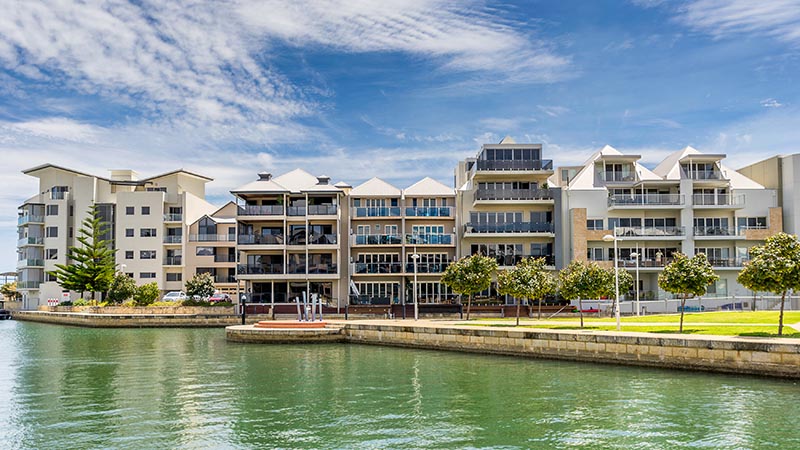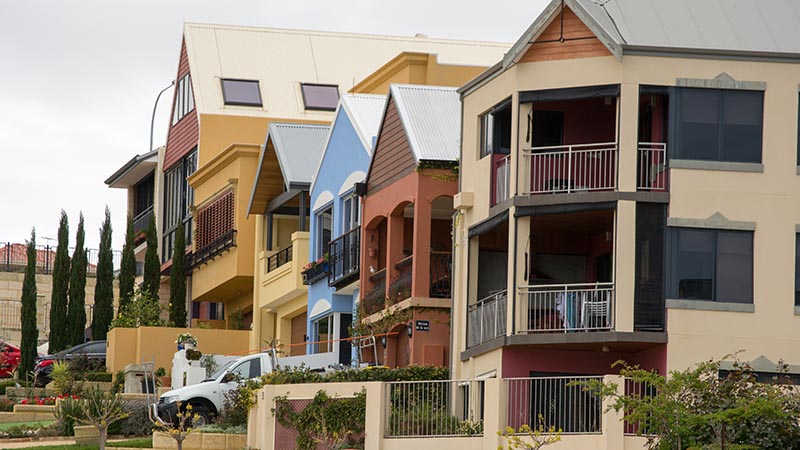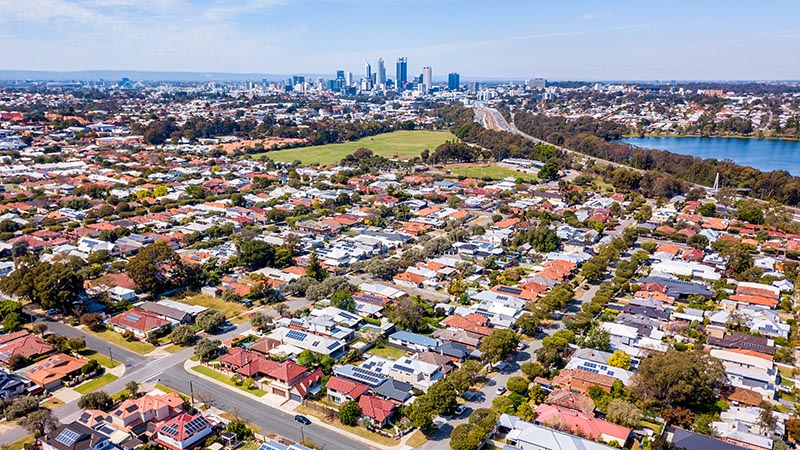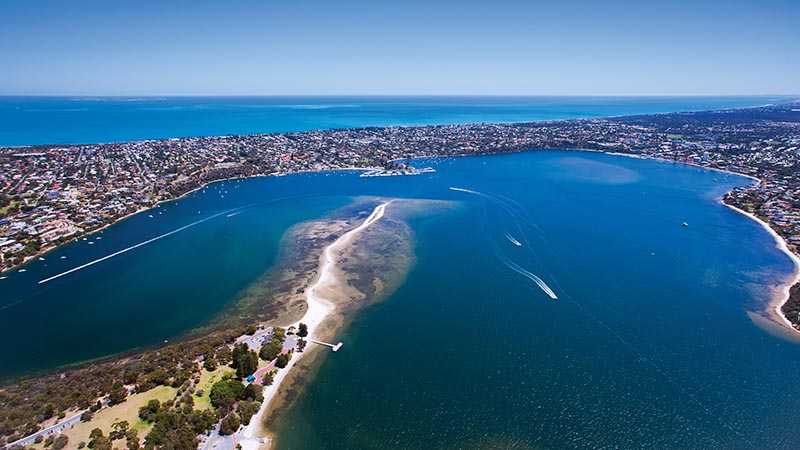Perth's inner suburbs delivering growth as median property price retreats
Perth’s western suburbs, between the beach and city, as well as those along the Swan River and coastline, are delivering double-digit growth despite the median metropolitan area property price declining.
Perth has joined the rest of the country’s capital cities in negative growth territory but inner suburban areas close to the CBD, Fremantle or other coastal suburbs are still delivering strong capital growth.
Driven by low stock levels, a growing population and stable economy, Perth’s western suburbs between the beach and city and those along the Swan River and beaches are delivering double digit growth.
With just 8,250 properties for sale in the entire metropolitan area, down 3.5 per cent on a year ago and well below levels seen in the 2010s, buyers wary of a falling median price are still being drawn to quality properties.
Investors are returning to the market, with rental stocks at their lowest level in 12 years. The last time there were just 1,600 properties for rent, Perth’s population was 20 per cent smaller than today.
CoreLogic’s Perth home value index declined 0.4 per cent in September, however Perth remains better positioned than other Australia jurisdictions, with strong buyer demand and many properties still selling quickly.
In Western Australia, property prices are forecast to drop 13 per cent next year before rebounding the next.
If house prices in Perth drop by the $89,000 that is expected before the end of 2023, that will see median prices in Western Australia’s capital dip below $500,000 once again. ANZ economists predict that property prices nationwide will drop by up to 20 per cent by the end of 2023 due in part to increased interest rates, with prices expected to begin recovery in 2024.
But the relatively pricey suburbs that are proving most resilient may hit 2024 already with a spring in their step.
Glenn Callanan, Partner at Wright Real Estate based in the western suburbs’ Doubleview, said units and villas have slowed but larger townhouses with a bit of land, modern new larger single-storey duplex or triplex houses were still going well, while development sites are scarce and highly sought after.
“I’ve never seen stock this low in my 30 years in the business, and this very low level of stock is helping to keep up demand and prices,” he said.
“Demand from young families looking for houses and land, young professional couples searching for front strata homes with a bit of land and older people downsizing into nice duplex and triplex villas are all strong sections of the market right now.”
Playing catch-up
By September, 29 Perth suburbs had recorded median house sale price growth of more than 10 per cent during the 2022 calendar year to date, including inner suburbs such as Mount Hawthorn, North Perth, Attadale, East Fremantle and Subiaco recording median price growth about 13 per cent.
Nik Zounis, Principal at Paragon Property, said that while the high volume of demand has gone from the market, suburbs in the inner city, such as North Perth, Mount Lawley, Mount Hawthorn, Highgate and Leederville are still doing extremely well,
“There is great demand for character homes, with numbers still strong through home opens and prices still holding up very well.
“These suburbs are all having similar low stock level issues.
“We do expect more stock to come to the market over the next few weeks through spring and the lead up to Christmas.
“The price growth has not been as apparent with units and apartments, with a lot of owners deciding to hold their properties as they are now receiving great rental yields,” he said.
Migration, a strong economy, low unemployment, high rents and tight supply are being offset by inflation eating into wages and the big issue, rising interest rates.
“Interest rate rises certainly had the effect of creating some initial uncertainty in the market, however, the general Perth market has come off such a low base, especially compared to the eastern states, that I think we are still in catch-up mode,” Mr Zounis said.
“There are a lot of young professional couples and families, along with downsizing Boomers wanting to take advantage of the village style charm and walkability to all amenities offered in the inner-city suburbs.
“With our rental market being very tight, we are also attracting strong investment demand from east coast investors, which will only get stronger in 2023 with overseas migration coming into an already tight market, plus the ever-increasing building costs preventing much new stock coming into the market.”
Mark Anderson, Property Partner at The Agency, attributed the lack of stock to uncertainty about the market’s trajectory.
“My feeling is the extreme lack of stock is due to people being unsure what to do, with the upsizers caught up in the ‘do we extend, do we build or do we sell and buy’ conundrum.
“Add in the uncertainty around interest rates and where they’ll top out and recession talk, and many have decided the subsequent safest course of action is do nothing unless there is a compelling reason, such as structural changes within the family.”
The luxury market was also defying any downturn, with prime property above $5 million in huge demand and setting suburb price records.
Looking ahead
In Perth, the average house sells for about $525,000, while the median house price in Sydney is an eye-watering $1.6 million. With relation to the CBD, Perth also offers a plethora of affordable properties within 30 kilometres, which, again, is unique when compared to Sydney and Melbourne, where many people are priced out of the CBD.
Just 13 kilometres from the city centre, Balga’s median house sale price is $350,000. Another attractive option is Lockridge, which comes in as the fourth most affordable suburb at $337,500 and is just 13.6 kilometres from the CBD.
ANZ economists predict that property prices nationwide will drop by up to 20 per cent by the end of 2023 due in part to increased interest rates, with prices expected to begin recovery in 2024.
In Western Australia, property prices falls are tipped to be a more modest 13 per cent next year before rebounding the next.
In the leafy inner suburbs, Paul Niardone, Executive Director of The Agency Group, told API Magazine that price falls were more likely to be limited to older units than houses.
“Western Australia on whole is still up more than 3.5 per cent for the year and the state on average didn’t have the large price movements that the east coast had during 2020 and 2021,” he said.
“Combined with total listing numbers being down 15 per cent, a rental shortage and growing migration in to WA, I expect housing values to go up reasonably well even against higher interest rate rises.
He pointed out that investors were being drawn to rapidly rising rental returns.
“Even though the RBA interest rate looks like heading somewhere between 3 per cent and 3.25 per cent, resulting in a standard variable rate of between 5.5 per cent to 6 per cent, rents on average have increased 9 per cent.”
Mr Zounis’ optimism about the inner suburban belt’s prospects extended beyond houses to the quality unit market.
The inner-city markets have always tended to be very resilient and I see further growth in the character home market.
“I think the next year or two will see units and apartments come back in favour as well, as they start to close the big gap on established homes and the younger cohort come to terms with a more stable interest rate, that will hopefully be settled midway through 2023.






















